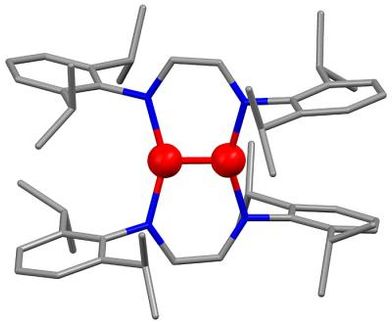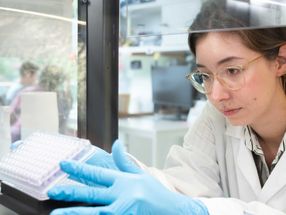Argonne scientists discover possible mechanism for creating "handedness" in biological molecules
Chirality can be induced by irradiation of magnetic substrates
Advertisement
The basic molecules that make up all living things have a predetermined chirality or "handedness”. This chirality has a profound influence on the chemistry and molecular interactions of living organisms. The inception of chirality from the elementary building blocks of matter is one of the great mysteries of the origin of life. Scientists at the U.S. Department of Energy's Argonne National Laboratory have discovered a way to induce this handedness in pre-biological molecules.
"Understanding how the molecules necessary for life originated is one of the most basic scientific questions in biochemistry," Argonne chemist Richard Rosenberg said. "Chirality plays a fundamental role in biological processes and researchers have been trying to discover the mechanisms that led to this property for years."
Rosenberg used X-rays from the Advanced Photon Source to bombard chiral molecules adsorbed on a magnetic substrate and x-ray photoelectron spectroscopy to track changes in the molecular bonds. He found that changing the magnetization direction in relation to the high-intensity X-ray beam created an excess of one chirality over another. Changing the magnetization direction reverses the spin polarization of the secondary, or low-energy, electrons emitted from the substance.
Based on the Argonne results, it is conceivable that chirality could have been introduced by irradiation of molecules as they traveled through the universe while adsorbed on a magnetized substrate in a dust cloud, meteor, comet or on a primitive planet.
"Our study shows that spin-polarized secondary electrons interacting with chiral molecules could produce a significant excess of a given chirality in pre-biological molecules," Rosenberg said.
Argonne National Laboratory funded this research, which made use of a beamline at the Advanced Photon Source. A paper on Rosenberg's work can be seen in a recent issue of Physical Review Letters.
Other news from the department science
Most read news
More news from our other portals
See the theme worlds for related content
Topic World Spectroscopy
Investigation with spectroscopy gives us unique insights into the composition and structure of materials. From UV-Vis spectroscopy to infrared and Raman spectroscopy to fluorescence and atomic absorption spectroscopy, spectroscopy offers us a wide range of analytical techniques to precisely characterize substances. Immerse yourself in the fascinating world of spectroscopy!

Topic World Spectroscopy
Investigation with spectroscopy gives us unique insights into the composition and structure of materials. From UV-Vis spectroscopy to infrared and Raman spectroscopy to fluorescence and atomic absorption spectroscopy, spectroscopy offers us a wide range of analytical techniques to precisely characterize substances. Immerse yourself in the fascinating world of spectroscopy!

































































